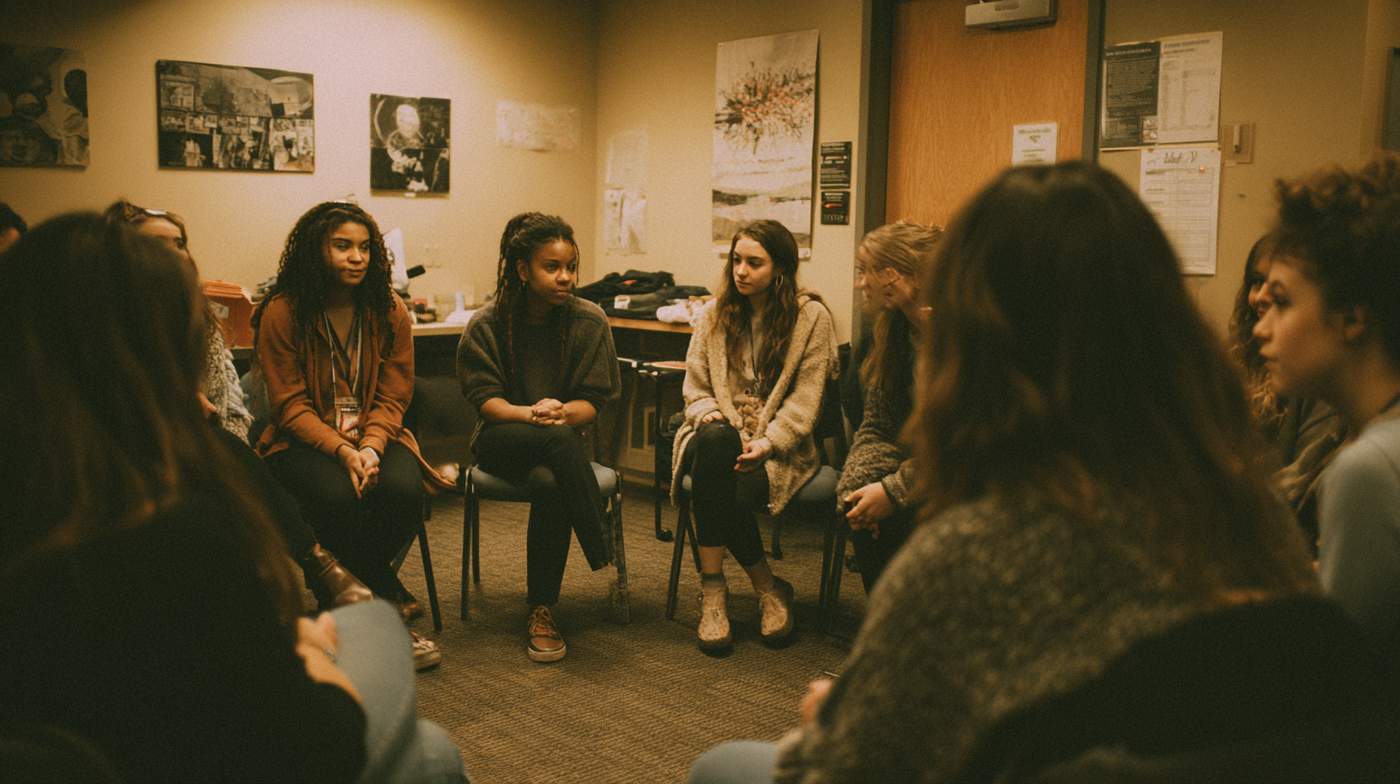There’s a particular relief in realizing you are not alone. You are not a statistical anomaly, nor the only one whose brain has staged a takeover in the name of a substance. Science has a phrase for this—social resonance—where our nervous systems relax when we recognize shared patterns in others. This is a main reason why group therapy in addiction treatment works.
In the case of addiction, those patterns often include familiar stories of compulsion, shame, and the baffling ways the brain bargains with itself.
Group therapy in addiction treatment leans into that resonance, creating a structured environment where honesty isn’t just encouraged; it’s contagious.
Why Group Therapy?
Neuroscience tells us that humans are wired for connection. Oxytocin—the hormone responsible for social bonding—has measurable effects on reducing anxiety, increasing trust, and improving mood regulation.
In group therapy, these biochemical shifts are not hypothetical; they happen in real time as people listen, speak, and realize that connection itself can be medicine.
What Group Therapy Looks Like in Practice
If you imagine group therapy as a semicircle of chairs in a quiet room, you’re not wrong—but that’s only the scaffolding. What fills the space is an ongoing conversation, guided by a trained therapist, where people speak in turn, listen without rehearsing their own next lines, and gradually learn to tolerate both silence and vulnerability.
The topics can range from “how I got here” to “how I’m going to survive next week without drinking,” with the therapist keeping the conversation on track and ensuring the room remains both safe and honest.
The Group Model
Group therapy in addiction treatment isn’t random storytelling. It follows evidence-based models, often integrating elements of cognitive behavioral therapy (CBT), motivational interviewing, or psychoeducation about the brain and body’s role in craving and relapse.
This structure matters—because in early recovery, wandering too far without a map can leave people lost in their own thoughts again.
The Spiritual Thread Running Through Group Work
Even in secular settings, there’s an undeniable spiritual quality to a group of people gathered for healing.
“Spiritual” here doesn’t necessarily mean overly religious. It’s the kind of shift that happens when someone finally says the thing they’ve been holding like a hot coal, and the group doesn’t flinch. That experience changes the air in the room.
For those open to explicitly spiritual elements, group therapy can be a place where prayer, or discussions about purpose and meaning, or best of all, the leading of the Holy Spirit, find a home.
In most cases, these moments aren’t scheduled—they emerge spontaneously when someone shares a hard truth and others respond not just with empathy, but with something like reverence for the courage it took to say it aloud.

Types of Group Therapy for Addiction Treatment
There’s no one-size-fits-all model here. Group therapy in addiction treatment comes in several flavors, each designed to address different aspects of recovery:
- Psychoeducational groups: Teach the science of addiction, brain chemistry, and relapse prevention.
- Process groups: Focus on emotions, relationships, and patterns of thinking or behavior.
- Skills-based groups: Practice stress management, communication, or problem-solving strategies.
- Support groups: Build community and accountability beyond formal treatment.
- Spiritual or faith-based groups: Integrate religious or spiritual practices into recovery discussions.
This variety allows people to find the spaces that match their needs and to practice showing up in more than one way.
Why Group Therapy Works (and Keeps Working)
Recovery is about rewiring the brain—literally creating new neural pathways that prioritize healthy coping mechanisms over destructive habits.
Group therapy accelerates this rewiring by repeatedly exposing participants to new perspectives, empathy, and shared problem-solving. These experiences are reinforced by the brain’s mirror neurons, which help us “rehearse” new ways of thinking simply by observing others do it.
Psychologically, the effect is twofold: group therapy normalizes the struggles of recovery while also raising the stakes in a healthy way.
When you commit to others that you’ll take a certain action—whether it’s attending a meeting, avoiding a trigger, or calling for help—you’re more likely to follow through. That’s accountability without the shame spiral, which is a rare and powerful thing.
A Place to Begin in Orange County, CA
At Covenant Hills Treatment Center, we understand that healing doesn’t happen in isolation. That’s why our programs—ranging from residential treatment to outpatient care—include group therapy as a cornerstone, whether in clinically structured sessions or faith-based discussions.
We’ve seen how these groups can shift the trajectory of recovery, making the difference between white-knuckling sobriety and building a life that feels worth living.
If you or someone you care about could benefit from the science and spirit of group therapy in addiction treatment, call 833-964-2244. We are ready to help you find the right path to recovery.








